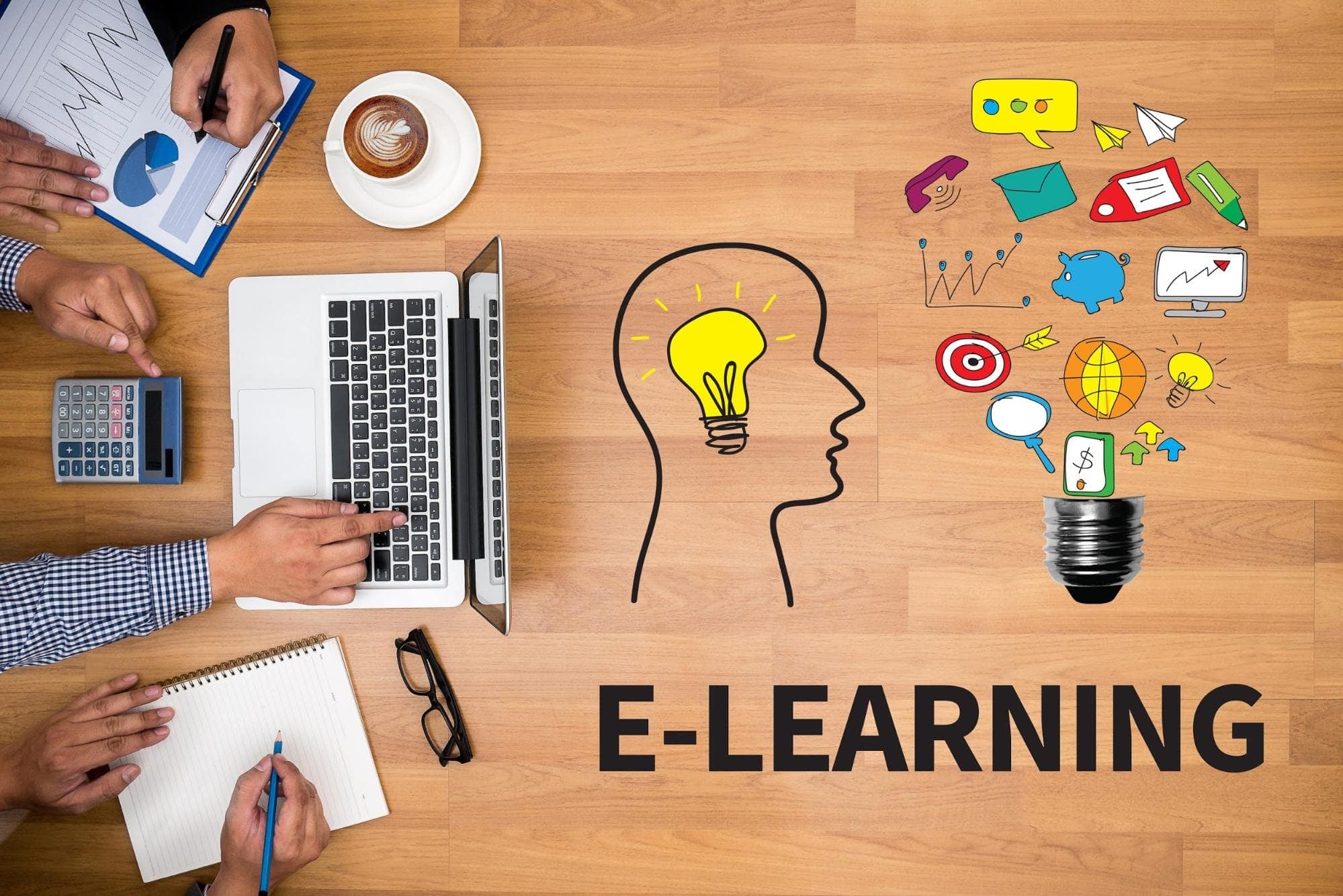E-learning (also called digital learning or online learning) is a hot topic right now because of recent lockdown measures that have been put in place all over the world. This is making e-learning more popular in educational circles.
I think it’s a great way to learn new things and broaden your horizons. You can do all of this from the comfort of your own home. It’s becoming more popular to learn through e-mail.
This guide is meant to help you understand the benefits of e-learning and how you can use it in your own life, no matter what.
Table of Contents
What Is E-Learning?
It is called “e-learning,” or “electronic learning.” It is when people use technology to help them learn. These technologies can be computers, phones, the Internet, and other digital media.
E-learning can be used for a lot of different things, like distance learning, online courses, and continuing education. E-learning can be a process that doesn’t happen at the same time as other people. People can get materials and do activities at their own pace.

Students are required to attend in live sessions at certain times, which can be synchronous or asynchronous Education is becoming more accessible and more flexible thanks to online learning. It also lowers the cost of education.
It can also be more engaging than traditional classroom learning since it gives students the chance to interact with multimedia content and with each other as well as each other.
Importance of E-Learning:
The Definition And Concept Of E-Learning:
Electronic learning, or e-learning, refers to any kind of online learning. This can encompass anything from university-level courses to non-formal learning opportunities offered by companies and other organisations.
Online courses give students the freedom and flexibility to work at their own pace and on their own schedule, which makes them an attractive option for those who want to learn on-the-go.

If you don’t have to print or mail any of your own materials, it can save you money. Learners can connect with people from all over world through e-learning, which can be a terrific way to create friendships and networks.
Advantages Of E-Learning:
An advantage of e-learning over traditional teaching methods is that it allows students to study at a pace that works best for them.
The following are some of the advantages that students can derive from utilising online education resources:
1. Enhances Efficiency and Effectiveness
With eLearning, students can complete their training more quickly and easily, which leads to better results and productivity. Learners appreciate the convenience of being able to pursue their education at their own pace and on their own time.
They are more likely to be motivated to achieve their professional goals via eLearning because it allows them to learn at their own pace and from any location they want.
2. The Environmental Impact is Minimized.
An increasing number of businesses are making an attempt to reduce their carbon footprint as part of their corporate social responsibility strategy. The use of eLearning is a smart way to lessen your environmental footprint.
An alternative to paper-based learning, it helps create a greener and more sustainable work environment.
3. Reduces your workload
It’s a good idea to conserve time whenever possible, especially on the job. When it comes to communicating changes to employees, eLearning makes it easier.
The eLearning in your LMS makes it simple to update your training materials and business policies. When it comes to arranging reprints and other things, this saves you a lot of time
In addition to saving time, students can avoid having to wait for scheduled instruction by accessing the knowledge when it is convenient for them. Using your LMS to automate tedious processes and save time in training administration is also an option.
4. Affordability
This is a huge benefit of online education and one that we’re glad to see! Keeping up with traditional education may be both expensive and time-draining.
eLearning has eliminated the need for expensive printed training materials and even on-site teachers. Updates to your content modules can be made quickly and easily through your LMS, eliminating the need to print and distribute new training materials.

Disadvantages Of E-Learning:
Best Way To Deliver E-Learning:
Now that you’ve read about the definition and history of eLearning, you have a clearer idea of what it is. It is both beneficial and straightforward to implement eLearning in your firm.
There are a range of eLearning ways that you may use to accomplish your goals, whether you are using eLearning to keep your employees up to date on corporate regulations or to help your customers better comprehend your product.
1. Using SCORM
To ensure that your content is compatible with a wide range of learning management systems, use SCORM to deliver e-learning content.
It is possible to provide and track eLearning content across different platforms using SCORM, a technical standard for eLearning.
It was designed by the US Department of Defense to standardize the delivery and tracking of eLearning content. SCORM stands for Sharable Content Object Reference Model. It has become the industry standard for eLearning and is supported by the majority of LMSes out there (LMS).
SCORM-compliant authoring tool must be used to develop your content before uploading it to your LMS. Your LMS will be able to monitor the progress and activity of students in your course after it is uploaded.
2. Using xAPI
It is a problem for eLearning developers to deliver content. Learning can take place at any time and from any location using eLearning, unlike traditional classroom-based training.
As a result, it may be more difficult to monitor student development and motivation. Because of this, xAPI offers a solution. xAPI helps developers to gain a detailed insight of how learners are interacting with eLearning content by tracking their interactions.
In turn, this information can be utilised to enhance the way eLearning materials are presented online. Therefore, xAPI is a crucial tool for eLearning providers who want to ensure that their content is being utilised properly.
3. Using a Learning Management System (LMS)
E-learning delivery and progress tracking are made possible through the use of a learning management system (LMS). LMSs come in a wide variety of forms and offer a range of options and capabilities.
It’s critical to think about your individual demands while selecting an LMS for your e-learning needs. You’ll need an LMS with scalability if your content needs to be delivered to a big number of learners.
Various LMSs are available, ranging from simple tools for delivering self-paced content to complicated platforms that handle live virtual classrooms and entirely online courses.
The goals and objectives of your organization must be taken into consideration while selecting an LMS. Are you looking for a simple way to provide pre-recorded content, or are you looking for a more robust platform that can enable live instruction and real-time interactions? Once you’ve figured out what you need, you can get started.
Quick Links:




